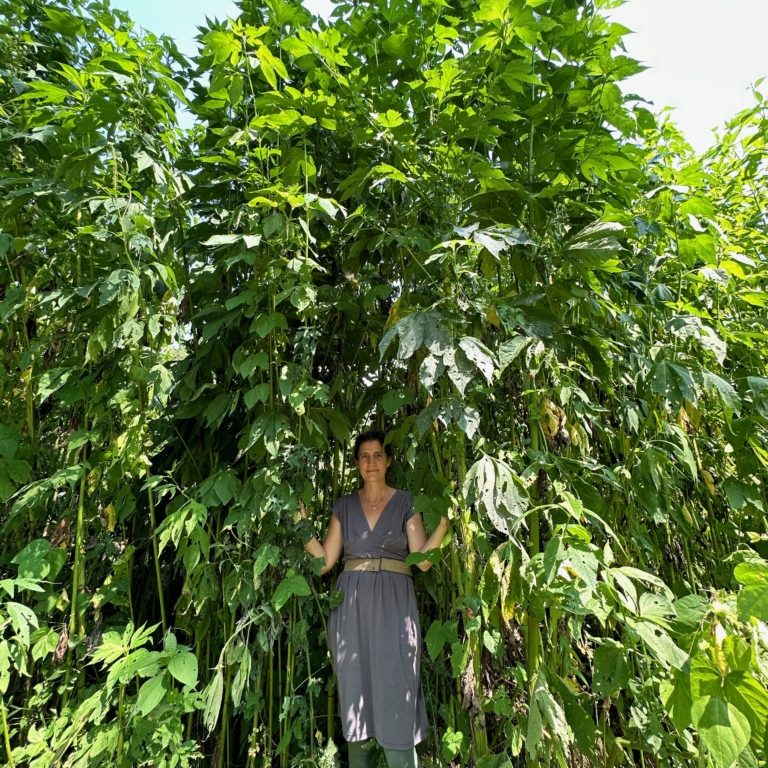Ragweed as Teacher
You may not have this exact plant growing near you, but likely there is an equivalent- a native annual that grows several feet tall in one season, is rich in pollen and is cursed by farmers and gardeners because it makes them sneeze and overtakes their non-native plantings. And all the while it is building soil, feeding and housing both pollinators and wildlife, and is free food and/or medicine for us humans.
GIANT RAGWEED
Ambrosia trifida
Asteraceae family
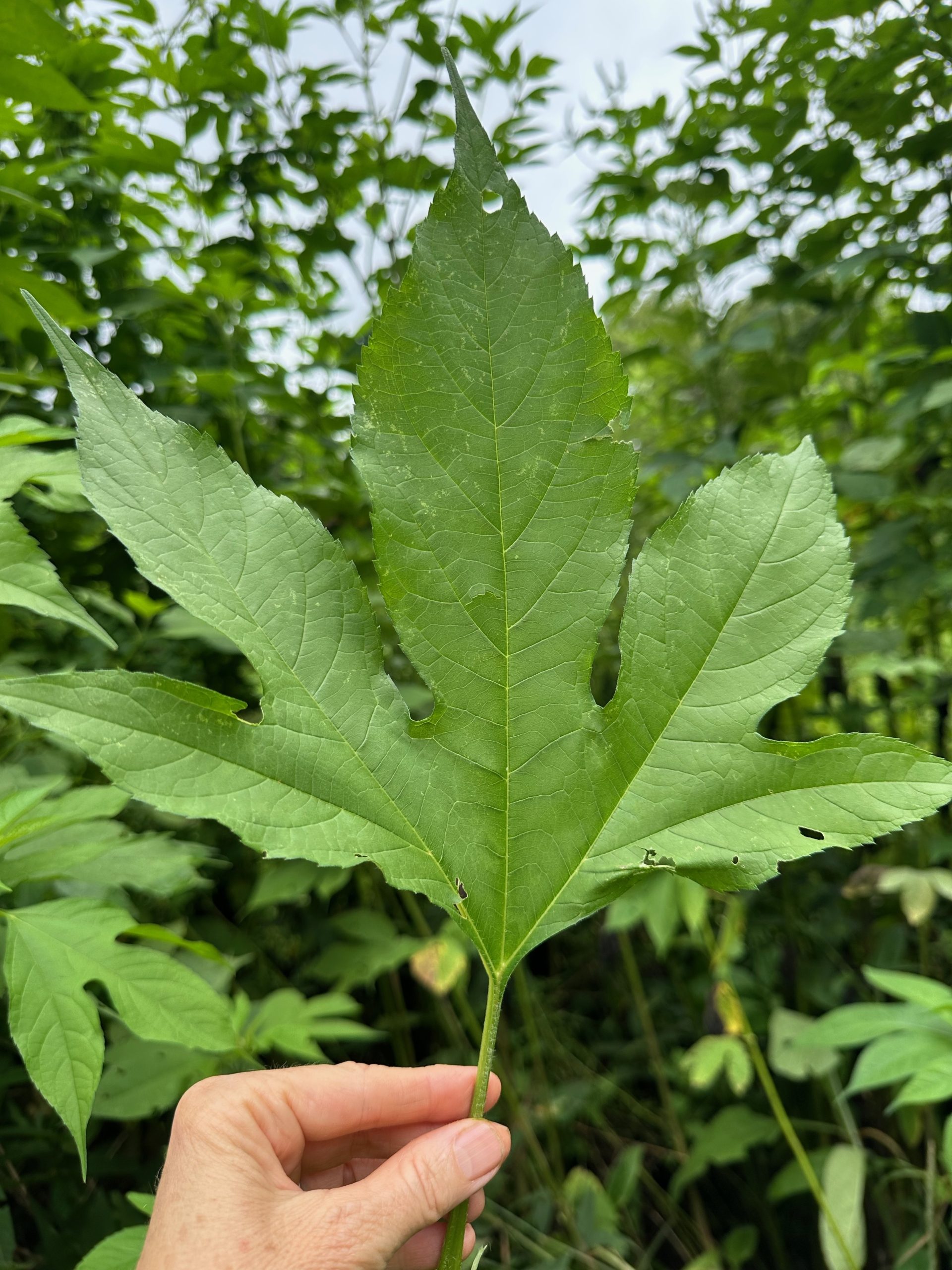
When I share about a plant, I like to think back to when I first met it. Consciously met it, I mean. I can imagine that I walked past this plant many a time before I took notice. It was in 2008, when I had horses. I noticed they loved eating this huge plant growing along the side of the field. I became curious. A local told me it was called Horse Sugar. I found out its latin name, which is one of the first things I ask about when meeting a new plant. So I have only been in relationship with Ragweed for 15 years, which I think is long enough to be able to share about it. It is still teaching me about itself, of course. (As if I will ever know all there is to know about a plant, no matter how long I have been relating with it.)
What marvels me more than anything about Giant Ragweed is how fast it grows and how much biomass it makes every single year. As soon as the winter starts to break, like late February, the little sprouts appear. I have heard the seeds can lay dormant in the soil for 100 years, just waiting for the right conditions to grow. If we get a severe cold spell after the seeds have sprouted, they all die, but then just a week later new sprouts have arrived. They are soft and hairy and quite cute, I think. This is when I eat them. 2 inches tall or so. I eat them raw or put them in with wild greens for potherbs or add them to my yarden drinks.
There is another ragweed, which is smaller, called Common Ragweed, with whom you may be more familiar. It is Ambrosia artemisifolia, named so because its leaves resemble Mugwort (Artemisia vulgaris). Overall, there are about 50 species in this genus, whose origins are in North and South America. Ambrosia is a Greek word for a food or drink of immortality. Seems to me a plant would have to be pretty darn special to get such a name. Supposedly it’s because it smells so good, but I can think of many plants that smell better than Ragweed. It does have a pleasant odor when cut though.
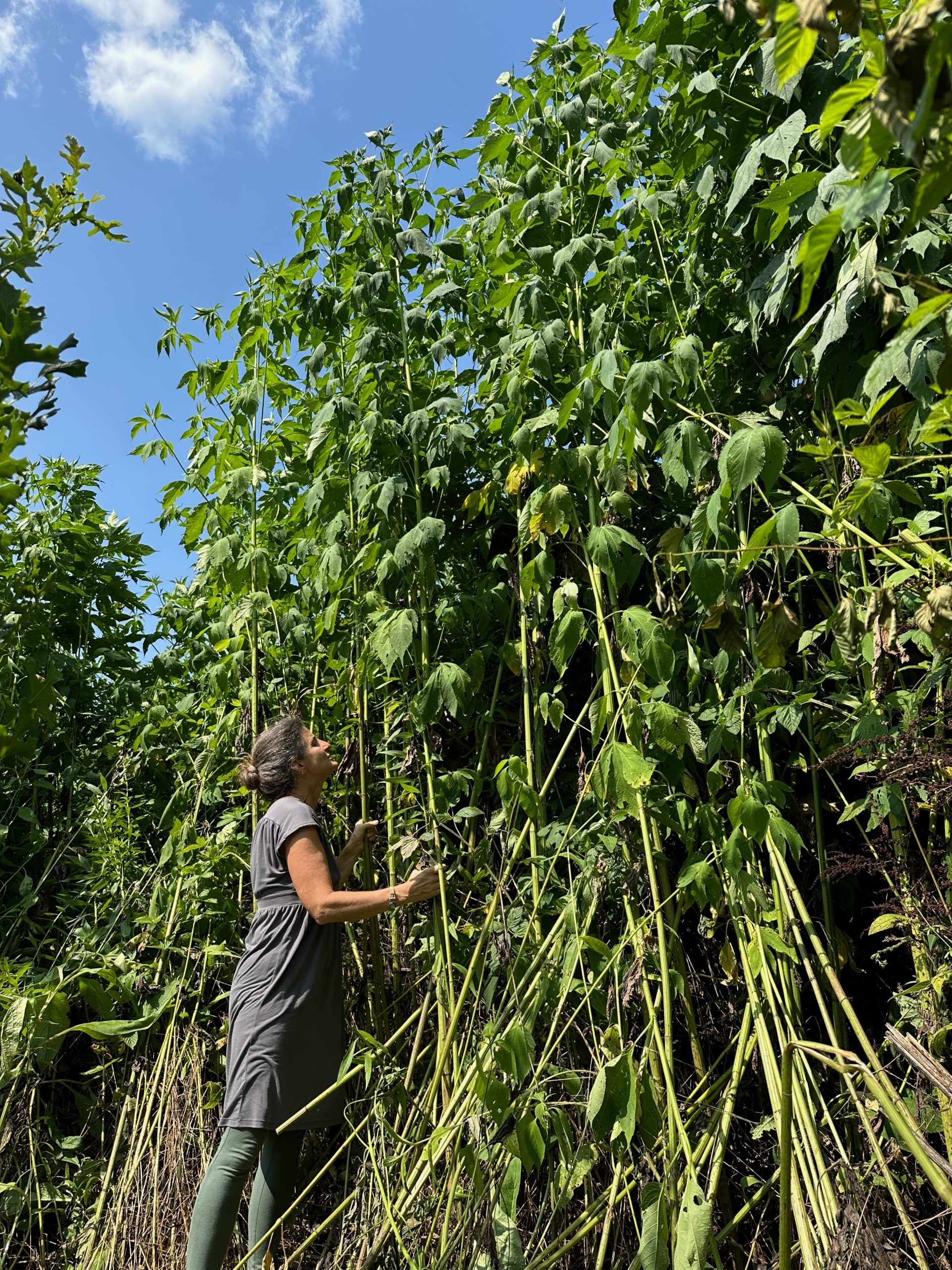
In one season, this Ragweed can make a jungle out of a disturbed area. As a ruderal species, one of its jobs is to colonize bare ground. The saying, “Nature abhors a vacuum” is readily exemplified by Ambrosia trifida. As it turns brown/black with the first freeze, it will slowly but surely dissolve back into soil, but not before it feeds finches, northern bobwhites, mourning doves and other birds with its protein-rich, fat -laden seeds during wintertime. Ragweed also lends itself to phytoremediation, removing lead and other toxins from the soil. These things alone are enough for me to have enormous respect for this plant. But there is so much more.
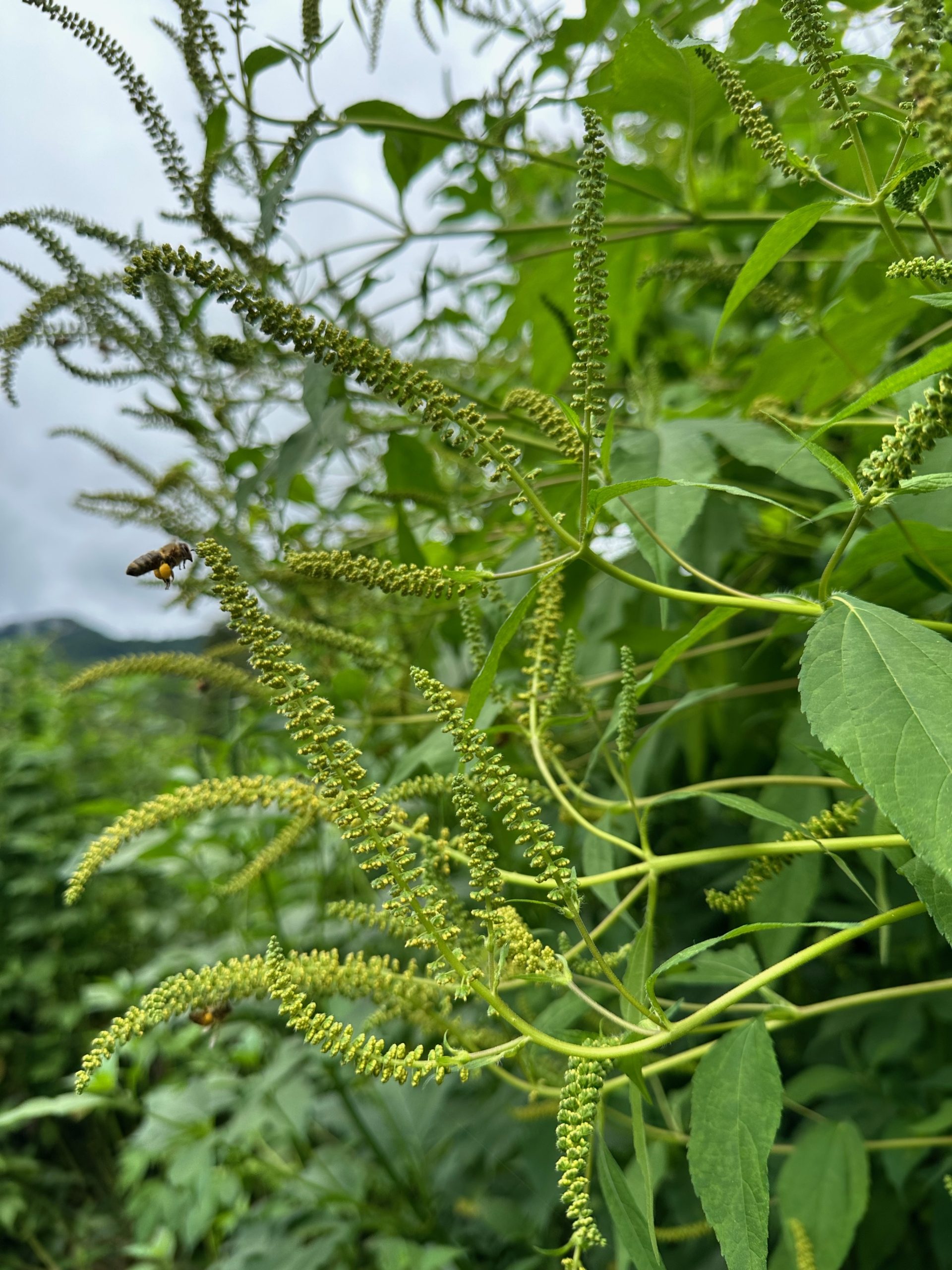
Have you been in the presence of this giant plant in late summer when it is blooming? It is a hub of activity! The sounds of all the flying insects gathering nectar and pollen from the inconspicuous flowers…Definitely stops me in my tracks! To think that this huge plant was a little sprout only 5 months before is awe-inspiring. I notice all of these leafhopper bugs, living on the leaves in groups. And large ants are always nearby. If you pull the plant out, it is likely one or more of the ants will get on you and bite. I have had it happen hundreds of times. The crushed leaves soothe the bite instantaneously. I love watching those ants come behind the leafhoppers to eat their honeydew. And the spiders waiting to eat the ants.
When the flowers have finished their prolific putting out, and turned on into seeds, I harvest some for my Mother Earth Bread making. The seeds are shaped like a conch shell or a chicken’s foot. I blend them up with other seeds like Yellow Dock, Chicory, Plantain, Evening Primrose, Amaranth and Wild Carrot as flour for this fun early-autumn celebration loaf.
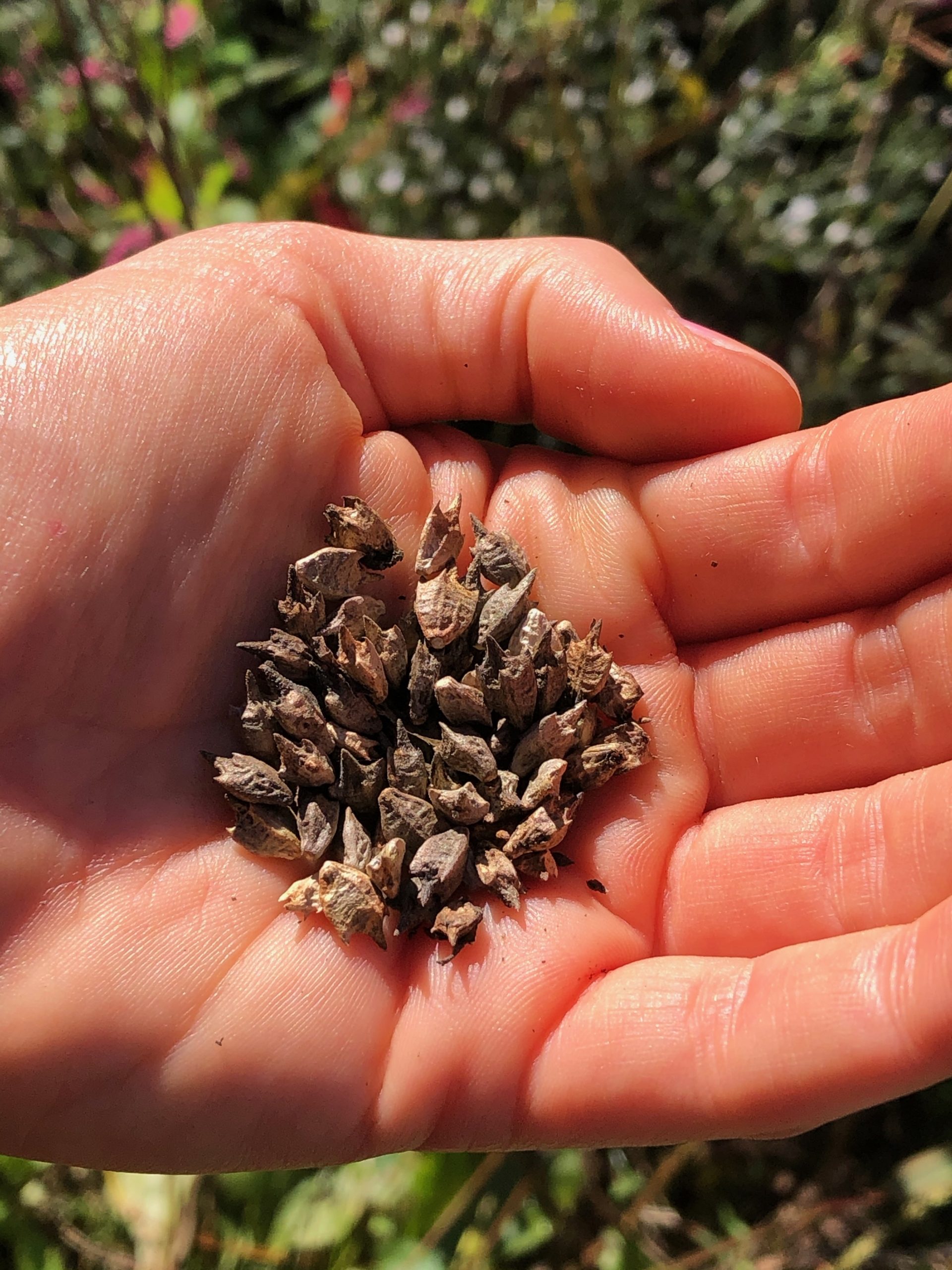
I use to get horrible hay-fever every summer and I don’t any more. Whether it is just chance or not, the allergies went away when I began to eat Ragweed. I’ve heard say ingesting it when its young gives you immunity to its allergy-causing pollen that comes on later in the season. A homeopathic remedy, so to speak. And I like the way it tastes, which makes it easy to eat. Some say its seed is one of the lost grains- that it was cultivated years ago, before corn.
First Nations peoples of the Meskwaki tribes chewed the root to drive away fear at night. Cherokee used this species as an ingredient in their green corn medicine ceremonies.* In modern day herbalism, Ragweed is called upon as an antihistamine support herb in tea or tincture form.
This plant is graciously giving in so many ways, to so many beings. I’d love to hear about your personal stories with it if you care to share, as I love learning about other’s experience. mary@maryplantwalker.com
*Native American Medicinal Plants by Daniel Moerman

